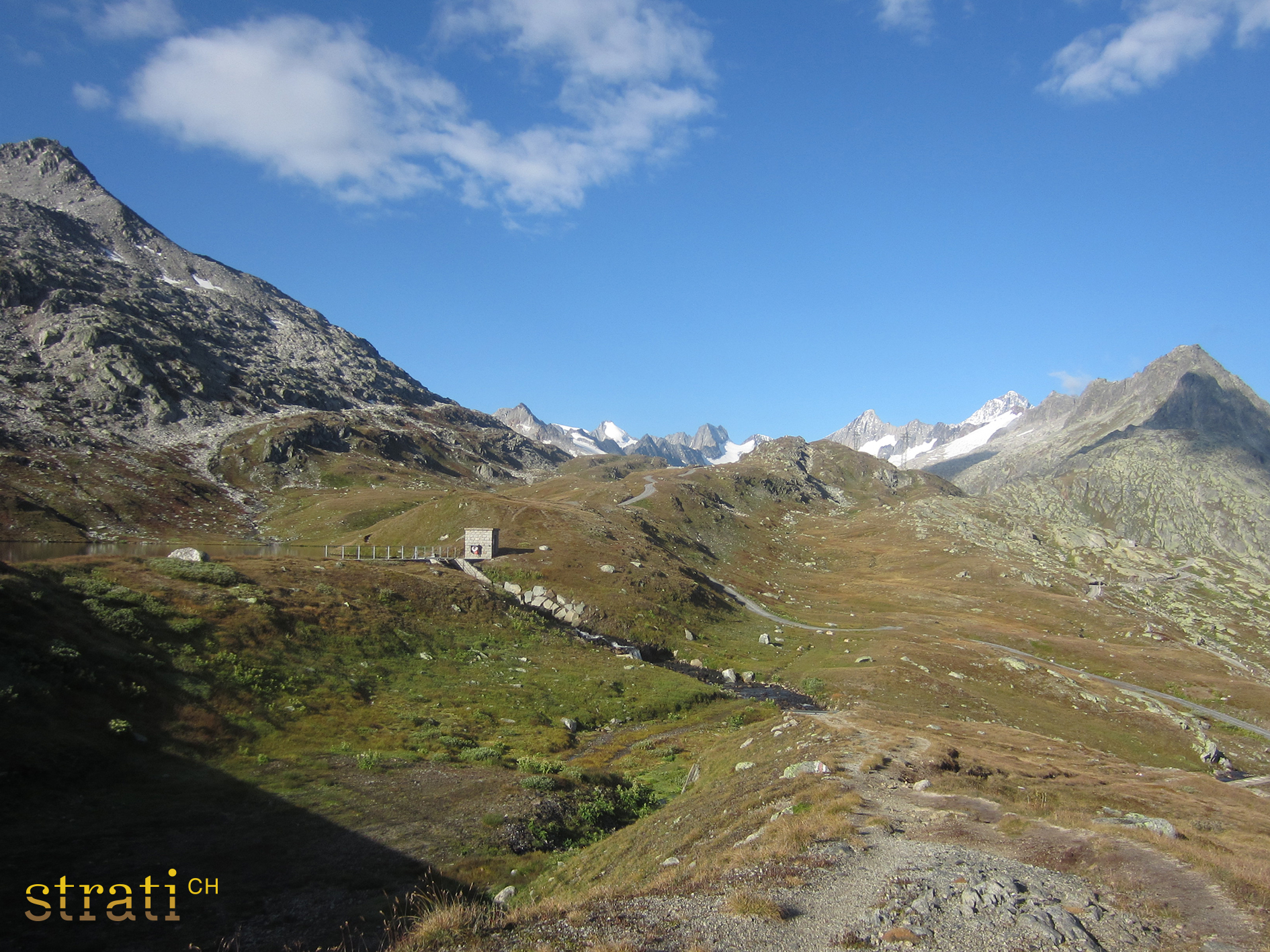Bäregg-Gneiskomplex
Torna a Massiccio dell'AarRappresentazione e statuto
- Colore CMYK
- (0%,16%,16%,2%)
- Colore RGB
- R: 250 G: 210 B: 210
- Rango
- Formazione litostratigrafica
- Uso
- Unità in uso.
- Status
- termine informale
Nomenclatura
- Deutsch
- Bäregg-Gneiskomplex
- Français
- Complexe gneissique de la Bäregg
- Italiano
- Complesso gneissico della Bäregg
- English
- Bäregg Gneiss Complex
- Origine del nome
-
Bäregg (BE), NE Oberaarsee
- Varianti storiche
-
Gneis-Schiefer-Zwischenzone = GSZ (Stalder 1964), Bäregg Gneiss Complex (Berger et al. 2017)
Geografia
- Estensione geografica
- Dünnes stark deformiertes Band zwischen Oberaargletscher und Furkapass.
Referenze
- Definizione
-
(2017) :
Geological Map of the Aar Massif, Tavetsch and Gotthard Nappes. Geological Special Map 1:100'000, Explanatory Notes 129
p.25: A thin, few hundreds of metres-wide band of strongly deformed rocks extends from the Oberaargletscher to the Furkapass. The western segment of zone corresponds to the “Gneis-Schiefer-Zwischenzone” of STALDER (1964) and its eastern part comprises the mylonitic rocks described by LABHART & RENNER (2012). Mylonites derived from different protoliths are dominant within the Bäregg Gneiss Complex (ROLLAND et al. 2009, WEHRENS 2015) and comprise following rock types: (1) The southern rim of the Grimsel Granodiorite and the Central Aar Granite, (2) migmatitic gneiss and amphibolite showing similarities with those of the Ofenhorn-Stampfhorn Gneiss Complex (ABRECHT 1994) and (3) Late Carboniferous metasedimentary and volcaniclastic rocks (OBERHÄNSLI et al.1988). An Alpine tectonic overprint is responsible for the main deformation of the different lithologies of the Bäregg Gneiss Complex, but the presence of layers of Late Carboniferous metasedimentary and volcaniclastic rocks indicate an earlier tectonic event at the end of the Variscan orogeny (OBERHÄNSLI et al.1988). It is important to note that the Oberaar-Furka Zone shows a distinct orientation compared to the strike of the foliation of all other units of the polycyclic metamorphic basement. In fact, all other units have more-or-less concordant boundaries matching the general curved SW–NE orientation of the entire Aar Massif, while the Oberaar-Furka Zone shows a WSW–ENE orientation. The Oberaar-Furka Zone shows local rock alteration linked to recent to subrecent hydrothermal activity (HOFMANN et al. 2004, BELGRANO et al. 2016).

